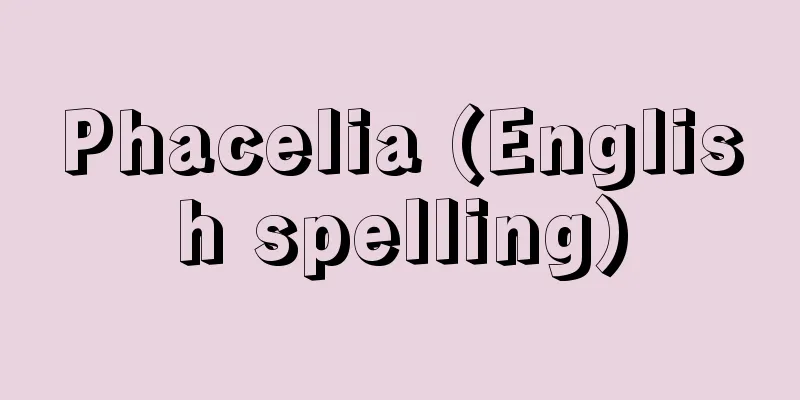Song Lady - Song Lady

|
...However, the mass production of "recorded children's songs" as popular children's songs led to a decline in their quality, and after the war, a movement for children's songs started again. This was done by poet Satō Hachirō (1903-73), who followed in the footsteps of Akai Tori, the Ikuma Group of New Composers (1924-), Akutagawa Yasushi (1925-89), Nakata Yoshinao (1923-), and others, and through the NHK radio program "Uta no Obasan," simple melodies but songs with artistic flavor such as "Medaka no Gakkou" (The School of Medaka) and "Zōsan" (Elephant) were born. Next, Nakata Yoshinao, Isobe Hajime (1917-), and others formed the "Roba no Kai" (Roba Society), and in order to break away from the image of "recorded children's songs," they did not use the name "children's songs" but called them "children's songs." ... *Some of the terminology that refers to the "singing lady" is listed below. Source | Heibonsha World Encyclopedia 2nd Edition | Information |
|
…しかし,子どもの流行歌としての〈レコード童謡〉の量産がその質の低下をもたらし,戦後再び子どもの歌の運動が起きた。〈赤い鳥〉の流れをくむ詩人サトウハチロー(1903‐73)や新進作曲家団伊玖磨(1924‐ ),芥川也寸志(1925‐89),中田喜直(1923‐ )らによるもので,NHKのラジオ番組〈歌のおばさん〉を媒介とし,ここから《めだかの学校》《ぞうさん》など,簡単な旋律でありながら,芸術味のある歌が誕生した。ついで中田喜直,磯部俶(1917‐ )らによる〈ろばの会〉が結成され,彼らは〈レコード童謡〉のイメージから脱皮すべく童謡の名称を用いず,〈こどものうた〉とよんだ。… ※「歌のおばさん」について言及している用語解説の一部を掲載しています。 出典|株式会社平凡社世界大百科事典 第2版について | 情報 |
>>: When the Song Entires - When the Song Entires
Recommend
Potassium iodide starch paper (potassium iodide starch paper)
A type of test paper used to detect oxidizing agen...
Miniature garden - Hakoniwa
In 1620 (6th year of the Genna era), when the Kat...
sinusoid
…This area is called Glisson's sheath, or por...
Family temple - Bodaiji
[1] [noun] A temple where a family converts to the...
overall position
...The requester mails it to the recipient, who p...
Rubidium strontium dating method - Rubidium strontium dating method
This dating method utilizes the phenomenon in whic...
Ouyang Xun
A representative calligrapher of the Tang Dynasty...
Uppuri Nori - Uppuri Nori
...The size varies depending on the species, but ...
Zensui-ji Temple
A Tendai sect temple located on the middle slope ...
《Oiwa Inari》 - Festive
… [Hirosue Tamotsu] [movie] There is a genre of J...
Gorchakov, Nikolai Mikhailovich
Born: August 19, 1898, Petersburg [Died] August 28...
Osteosarcoma - Osteosarcoma
[What kind of disease is it?] Osteosarcoma is the ...
Odyssia
...In the following, we will look back historical...
Mount Kariba
It is the main peak of the Kariba Mountains at th...
Fusajiro Kodera
Chemical engineer. Born in Osaka in 1870. After g...









